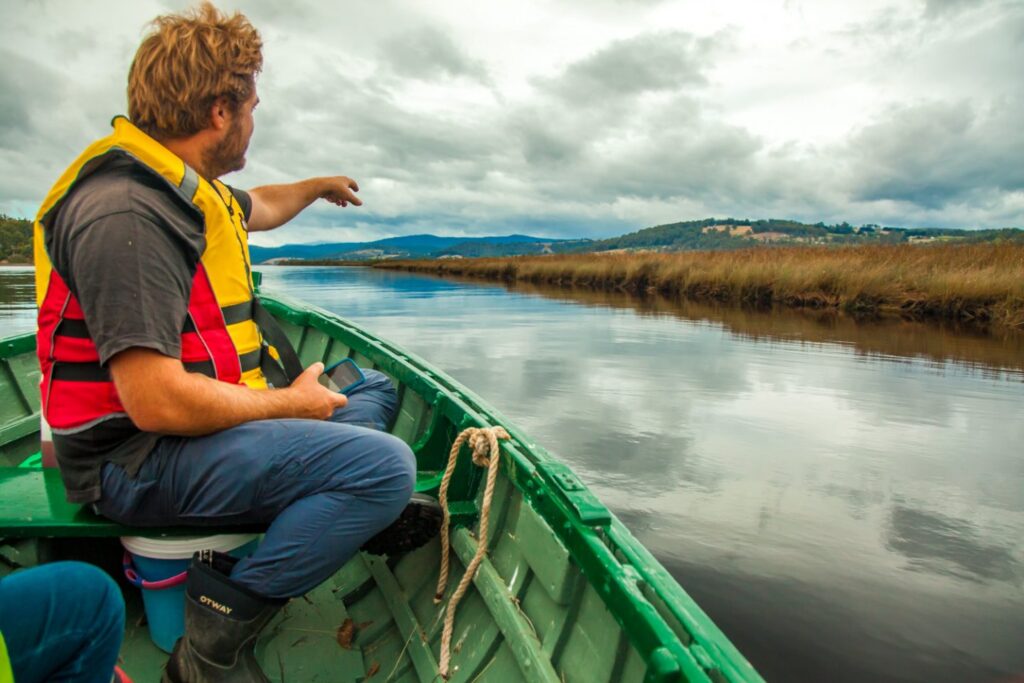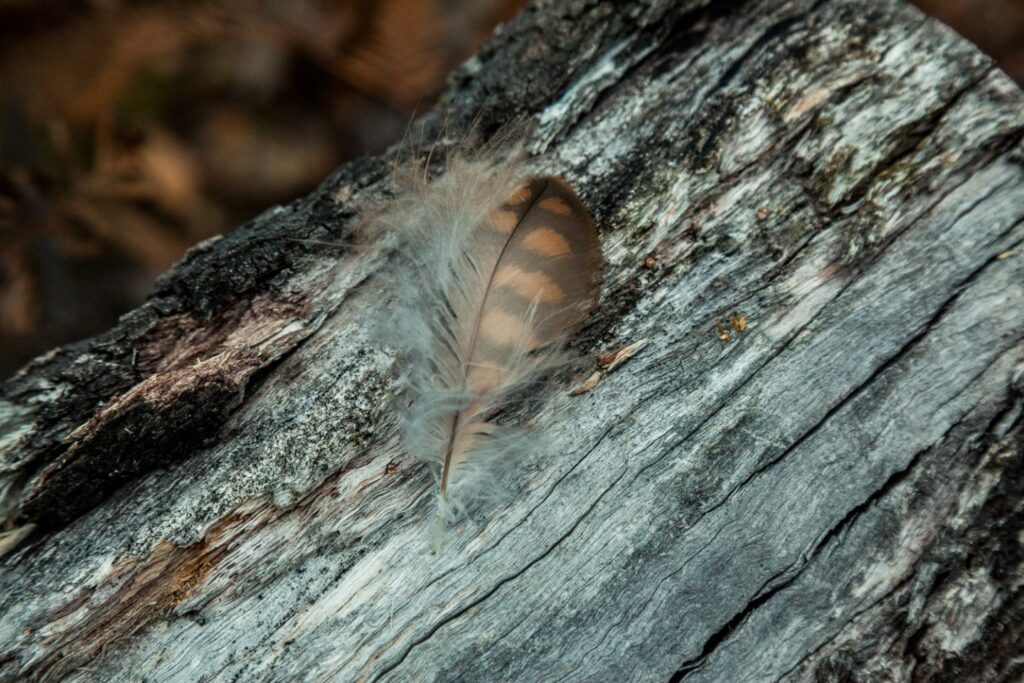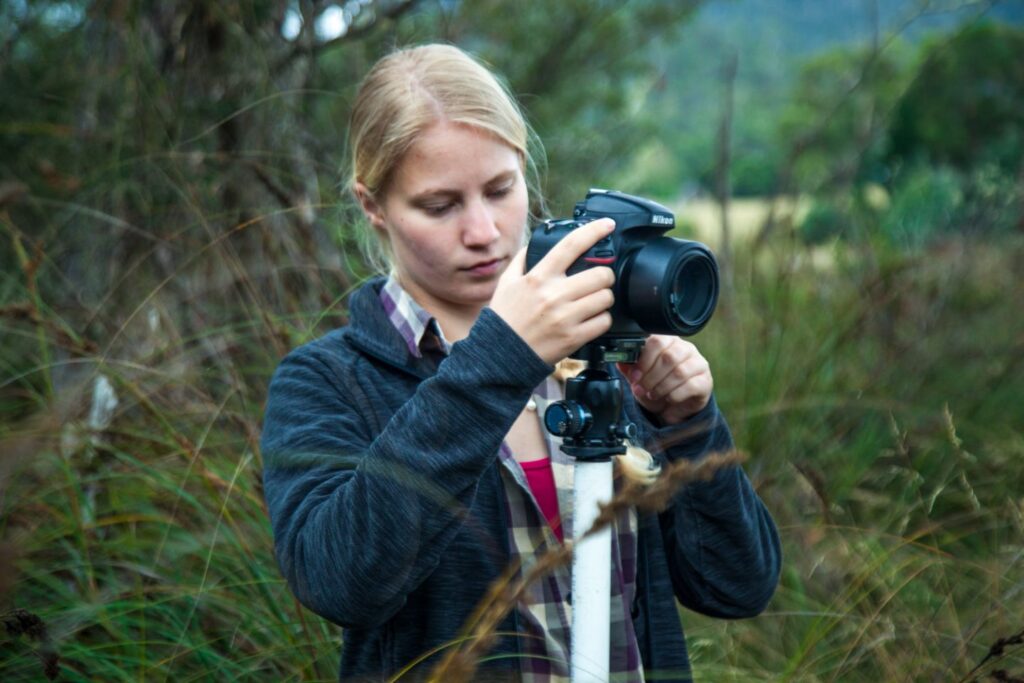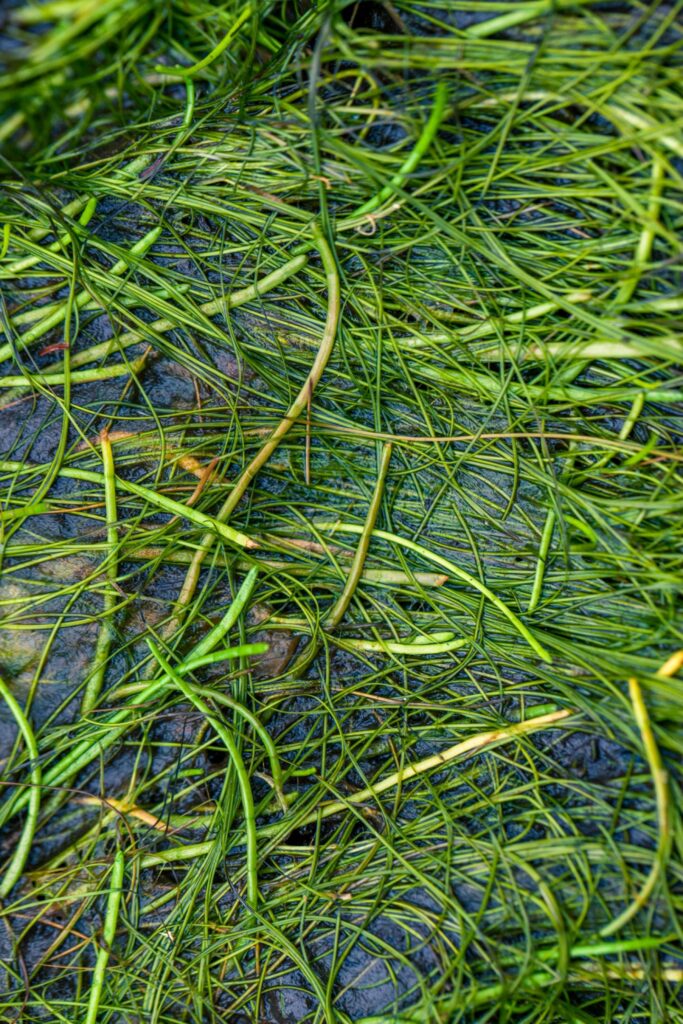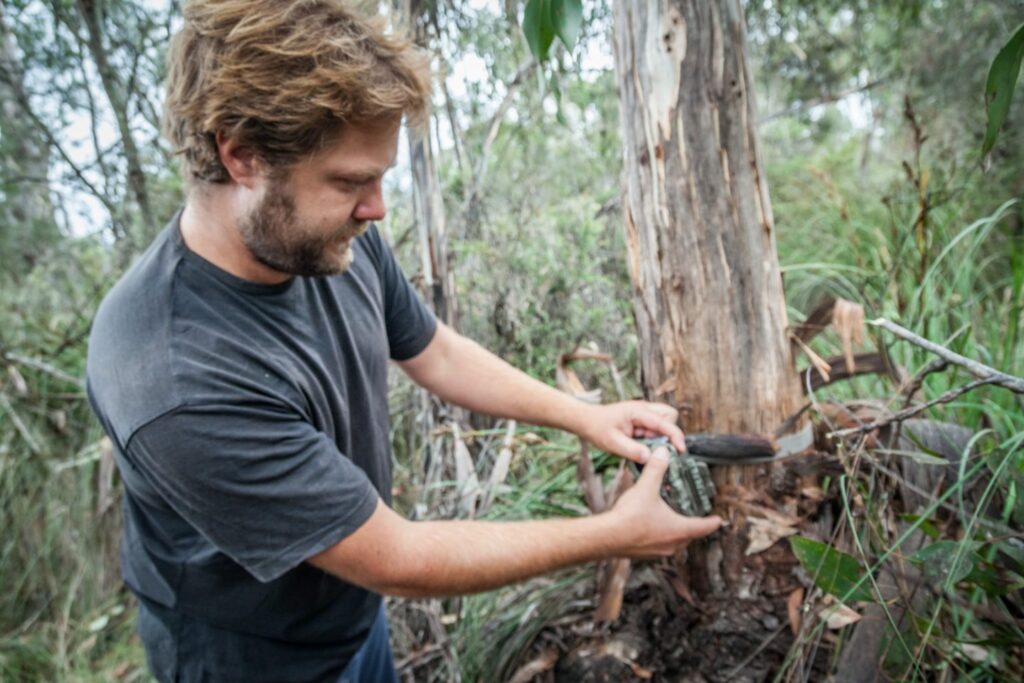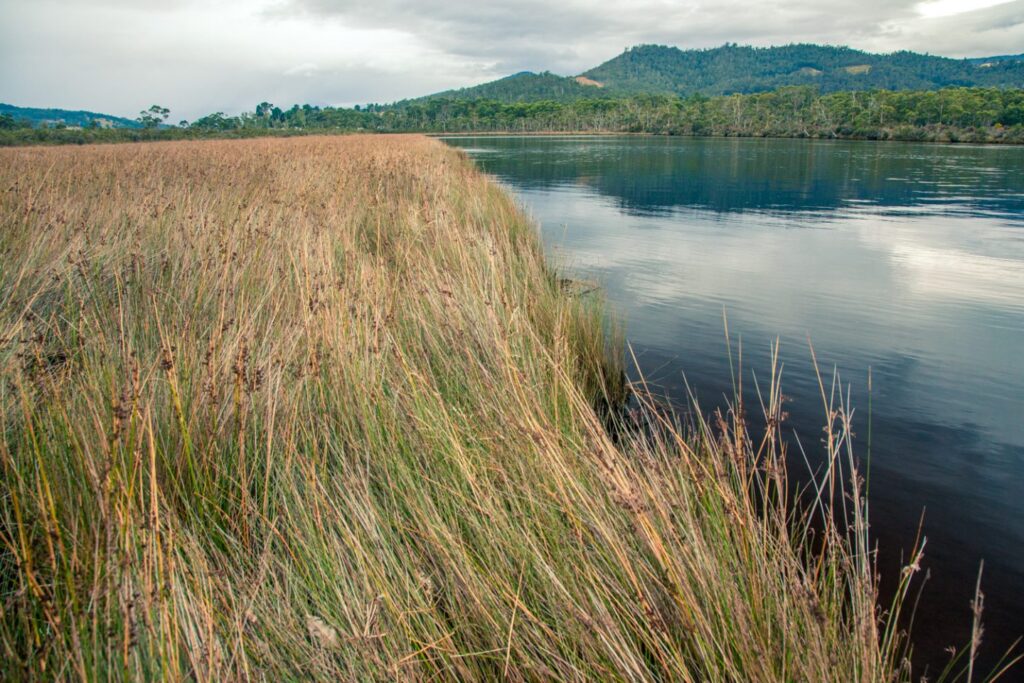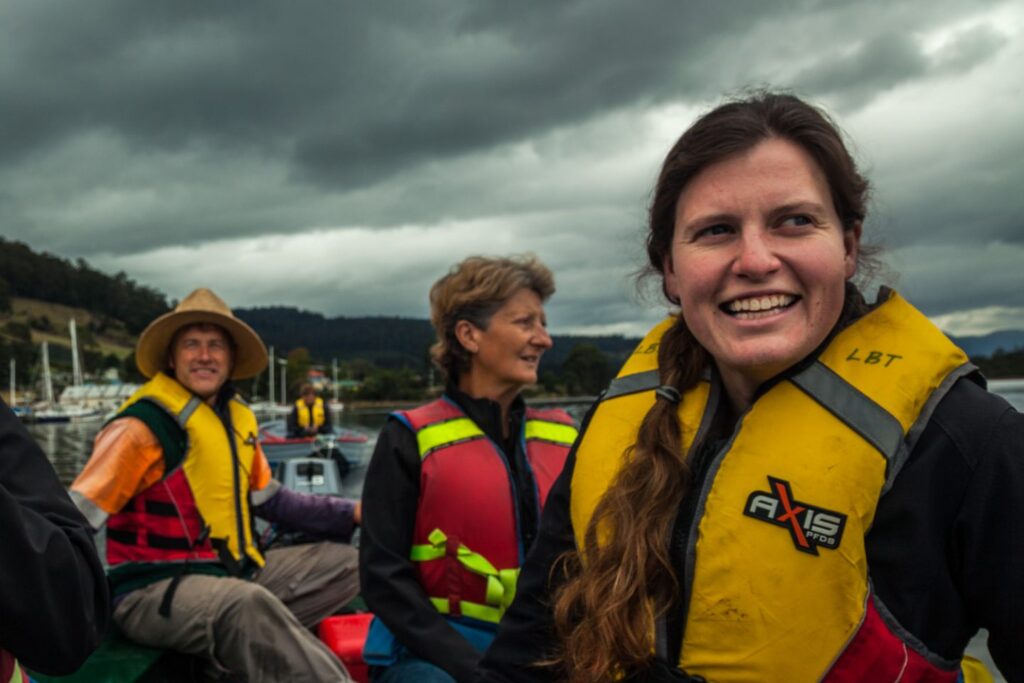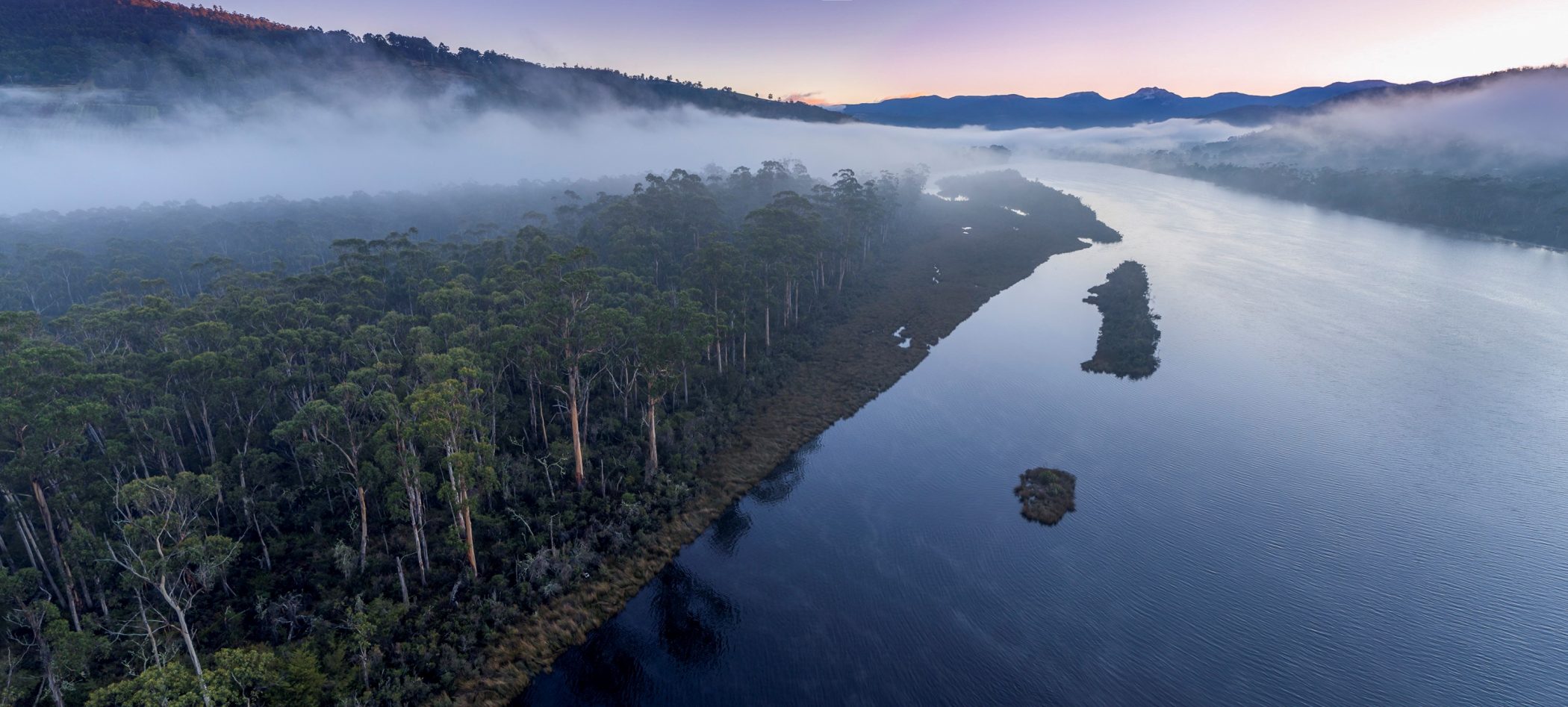Decades of human activities have played an important role in shaping the history and development of the Huon Valley.
During early European settlement, the Egg Islands – located a stone’s throw from the township of Franklin – were utilised for stock grazing, fruit and vegetable growing, timber harvesting, duck hunting and greyhound training, with some sources even reporting a football oval to have once existed on one of the islands.
Little evidence of this use remains today, with the islands most significant heritage feature being a canal across the south island, cut by convicts in 1838 to improve travelling time between Franklin and Cradoc. With an abundance of sedges and grasses cascading into the Huon River from either side, the narrow passage of water today feels more like an untouched wilderness hideaway than a human crafted canal.
Embarking in a wooden boat captained by TLC volunteer Peter Venning, the TLC’s science team returned to the islands in March to continue monitoring the outstanding natural values of the 136 hectare permanent reserve.
Despite the islands proximity to the Huon Valley, the TLC’s Dr Sally Bryant explains the significance of the islands as a reliable conservation sanctuary.
“A variety of vulnerable small mammals rely on the natural water buffer to safeguard them from otherwise common looming predators,” she said, adding that the absence of feral cats allows pademelon, potoroo, brown bandicoots and eastern-barred bandicoots to thrive.
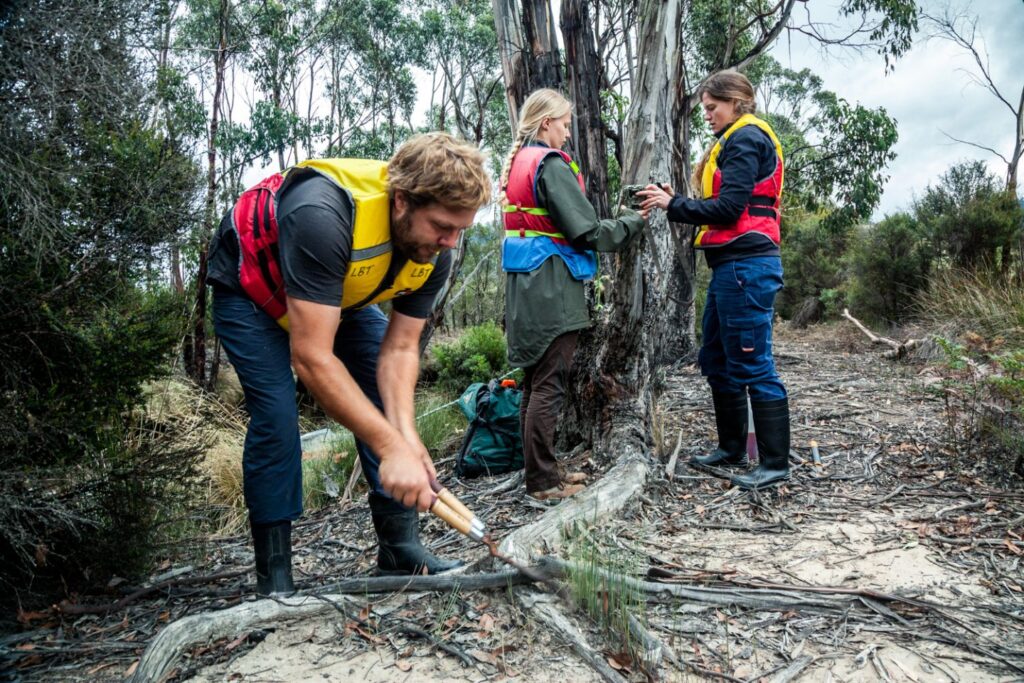
In addition to protecting susceptible fauna, pockets of endangered black gum swamp forest – the last of its kind in the state’s south east – stand defiant among the reserves mosaic of wetland and saline grassland communities.
The forest provides critical foraging and nesting habitat for 87 native bird species – including the endangered grey goshawk, swift parrot, and wedge-tailed eagle – while surrounding vegetation offers refuge for the endangered Australasian bittern.
Habitually shy and with a talent for camouflage, the Australasian bittern’s most identifiable feature is a loud booming call, heard at dusk and dawn throughout the breeding season.
The resonant and terrifying call of the bittern is thought to have originated the Aboriginal legend of the Bunyip – a vicious spirit creature that lurks in swamps, creeks and waterholes.
To ensure the best conservation outcomes for this cryptic bird, a collaboration between the TLC, NRM South and the University of Tasmania continues to explore automatic acoustic detection.
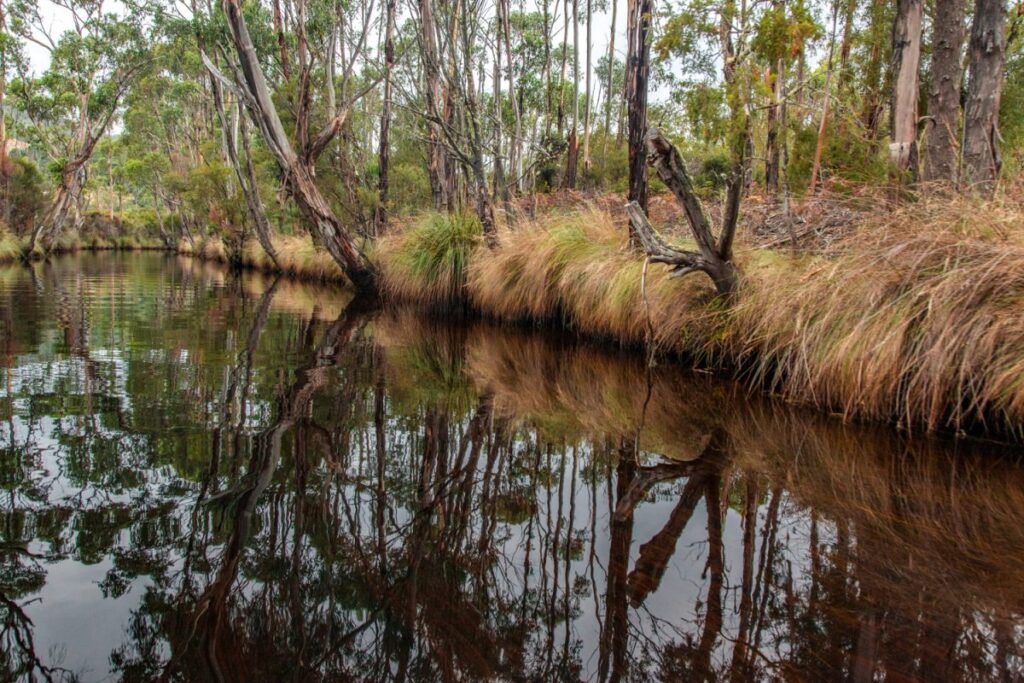
Since its establishment in 2007, the TLC has helped achieve a 99% reduction in weed density on the Egg Islands, maintained the condition of forest, wetland and saltmarsh, and provided opportunities for the community to visit the reserve for recreation, education and volunteering.
Data collection from fixed camera locations will continue help capture the many facets of the reserves complex and intricate ecosystems.
“This will help keep the islands predator free, control existing weed populations and prevent new weeds establishing,” Dr Bryant said.
Through employing simple, repeatable and robust scientific techniques (that barely warrant the removal of life jackets between monitoring sites) information can be gathered to inform conservation management, and protect the cultural and natural values of the Egg Islands for future generations.
